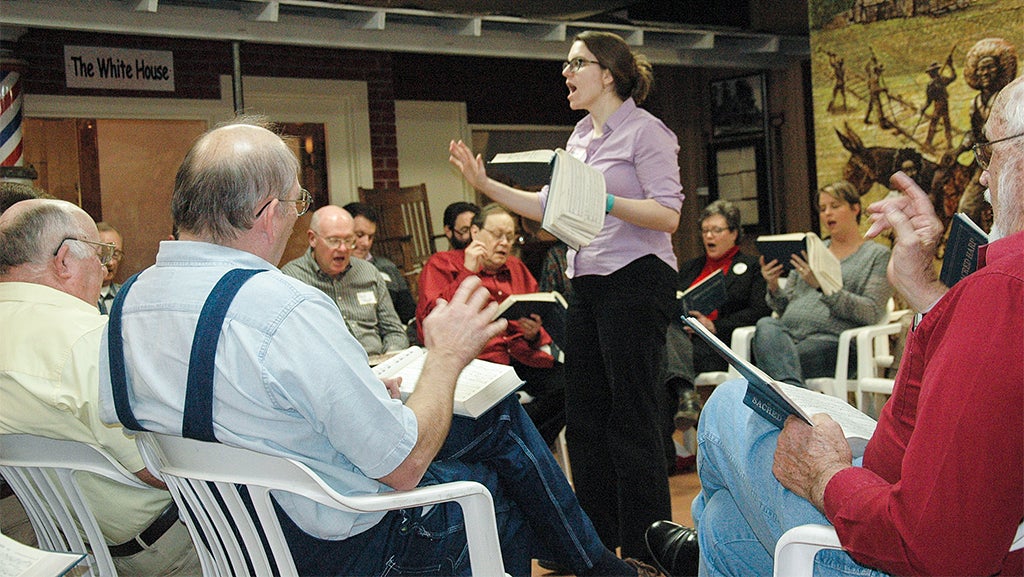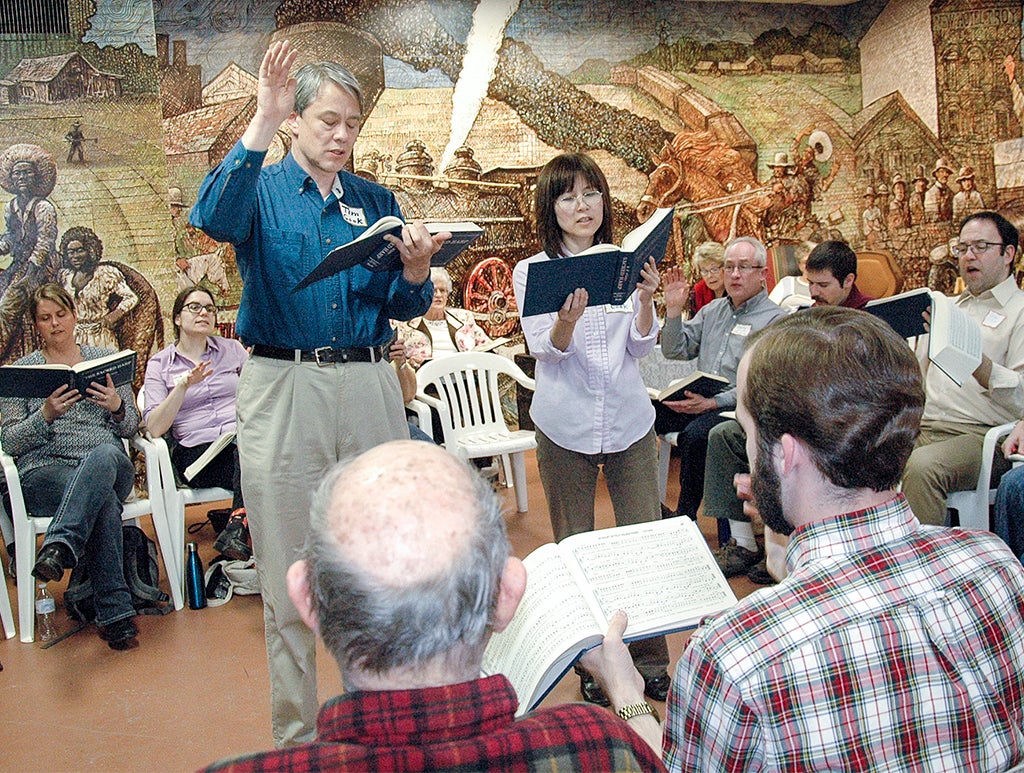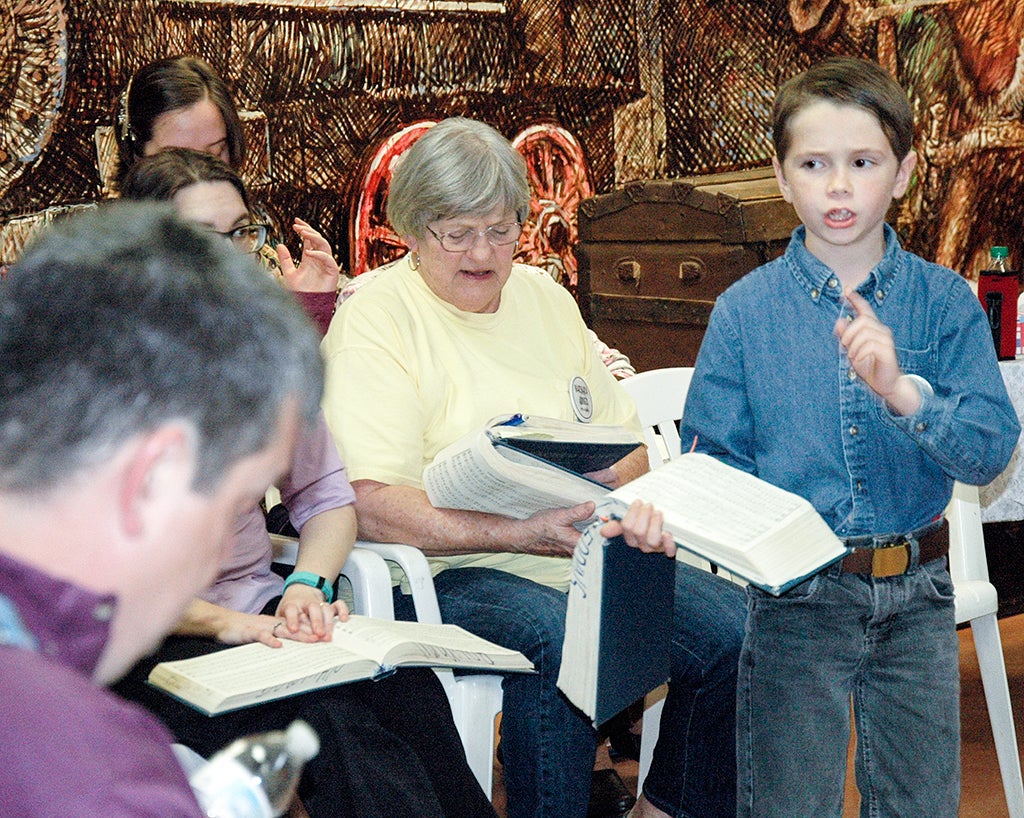Poetry in the notes
Published 3:00 am Saturday, March 5, 2016

Dozens of participants joined together for the Sacred Harp singing at the Pioneer Museum last weekend. The event relies on shape-note signing, which uses only the vocal prowess of the participants to create the notes and, in turn, reveal the poetry of the music. Above, a song leader guides singers through the first songs. Below, Tim Cook and his wife Mako, who are originally from Michigan, said they have been inspired by the music in which the voices act as the harps. And, bottom right, Ewan Eddins was the youngest songleader at the singing.
Tim Cook grew up in Michigan loving the songs that were sung in his church.
He often wondered why people didn’t get together to sing those wonderful songs outside of church.
“Then, we came to Alabama and found that people do get together to sing outside of church,” Cook said.
Cook had moved to Birmingham, which is not too far from Sand Mountain where Sacred Harp singing has deep roots. He had never heard that kind of singing – singing with remarkable volume, intensity and enthusiasm – fasola singing.
Cook was immediately drawn to the old time way of singing. His wife, Mako, found the music “pretty but loud.”
In time, both husband and wife were singing the poetry of the songs … and the notes — fa, sol, la, mi.
“The shapes took time to learn,” said Cook who participated with his wife in the Sacred Harp Sing at the Pioneer Museum of Alabama last Saturday. “And Sacred Harp is sung without instrumental accompaniment. Your voice is the ‘harp’ so you have no music to follow.”
Cook said Sacred Harp music is not sung for an audience.
“It is sung for your own enjoyment and inspiration,” he said. “Real enjoyment and inspiration come from participating. You don’t have to be a good singer. Just sing with enthusiasm and from the heart.”
When the Cooks moved to Japan, they took the “red book” and “blue book” of Sacred Harp music with them. But, shape note signing is a “together” way of singing. So, Cook began teaching the “totally new” way of singing once a month to people in their Tokyo neighborhood.
In 2012, the Cooks held the first Sacred Harp Sing in Tokyo with about 100 singers in attendance.
“Unfortunately for the Japanese, I’m the only person to impart the culture as well as the music,” Cook said. “While I was singing in Troy, I thought how amazed both Alabamians and Japanese would be to be at each other’s singings. I hope to turn that thought into a reality some day.”
Cook said he has lived in a lot of different places and misses something about them all.
“But what I miss most about Alabama is Sacred Harp singing,” he said. “Not only do I love to sing. I love the harmony, the poetry and especially the singers.
The Cooks will return to Japan at the end of March.
“I’m hoping the interest in Sacred Harp music grows and there will be exchanges back and forth in the future,” he said.
Cook’s reality might not be that far away.
Wayne Jones of Opp, who was one of a large group of singers at the Pioneer Museum sing, said that’s a good possibility.
“Sacred Harp is the kind of music that you like or don’t like,” Jones said. “If you like it, it gets in your heart and soul and it will stay there.”
As a youngster, Jones attended signing school and learned to “sing the notes.”
“I went to sings for years and then I got away from it for a while,” he said. “But around 1995 or 1996, I got started back and I’m here to stay. Sacred Harp singing just stays with you.”
Tommy Spurlock from Ozark has been singing Sacred Harp music for about 70 years. He never got away from it and doesn’t “plan on getting away.”
“I don’t know how to say what it is about shape note singing that catches you,” he said. “But it does. I enjoy the friendships and fellowship of it and I just like to sing.”
For Karen Clark from Auburn, it’s the poetry of the music that holds her close.
She led a relatively new Sacred Harp song, “Nightfall” at the Troy sing and it was a very emotional experience.
The song was written by a husband for his wife who was dying with cancer. The family gathered around her bed and sang the song as a memorial to her before she died.
“These songs tell stories and they have deep meanings,” Clark said. “‘Nightfall’ has a special meaning to me. We all have songs that are very personal. Leading this song meant a lot to me.”
The songs and hymns in the Sacred Harp books are primarily traditional but new songs are continually taking their places among the tried and true songs.
Jillian Parris has “just started” singing Sacred Harp “because of so much family.”
“You don’t have to have the right pitch and there are no sets of rules to follow,” Parris said. “You just open your mouth and sing.”
The Parris family is one of note in that there are several published shape note songs that were written by family members dating back four generations.
Chris Parris said his great, great grandfather, H.O. Parris, had songs published as does a cousin, O.A. Parris, who was inducted into the Songwriters Hall of Fame. He also wrote songs for the Happy Goodman family. So, when people gather for Sacred Harp sings, they share their love of shape note singing and stories of the songs that are close to their hearts.
“No matter where you’re from or how long you’ve been singing, there’s a bond that holds us all together,” Parris said. “That bond is Sacred Harp.”





